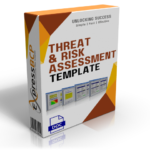Creating a Business Continuity Plan (BCP) is crucial for any business that wants to prepare for unexpected disruptions. Many businesses start by using a BCP sample to guide them through the process. However, even with a good sample, there are common mistakes that can reduce the effectiveness of your plan. In this post, we’ll highlight some of these mistakes and show you how to avoid them.
1. Not Customizing the BCP Sample to Your Business Needs
A BCP sample is a great starting point, but it’s essential to tailor it to your specific business. Many businesses make the mistake of simply filling in the blanks without considering their unique risks and operational needs.
How to Avoid It:
Take the time to review each section of the BCP sample and think about how it applies to your business. For example, if your company relies heavily on a supply chain, you’ll need to include detailed plans for supply chain disruptions. Customize the plan to reflect the particular threats and resources of your business.
Tip: ExpressBCP offers a Business Continuity Plan Template that’s designed to be easily customizable for businesses of all sizes. It’s a great way to ensure your BCP is both comprehensive and specific to your needs.
2. Failing to Involve Key Stakeholders
Another common mistake is not involving the right people in the planning process. A BCP is more than just a document; it’s a plan that needs input and buy-in from across your organization. If key stakeholders aren’t involved, the plan might not cover all necessary areas, and employees might not understand their roles in a crisis.
How to Avoid It:
Ensure that representatives from all critical areas of your business, such as IT, operations, human resources, and finance, contribute to the plan. This not only makes the plan more robust but also helps in gaining support and understanding across the company.
3. Overlooking Regular Updates and Testing
Once your BCP is in place, it can be tempting to file it away and forget about it. However, a BCP that isn’t regularly updated or tested is likely to fail when you need it most. Business environments, risks, and technologies change, and your plan needs to evolve too.
The Disaster Recovery Institute International (US) and the Business Continuity Institute (UK) both provide further and detailed guidance on exercising testing.
How to Avoid It:
Schedule regular reviews of your BCP—at least annually or whenever significant changes occur in your business. Also, conduct regular exercises or simulations to test the plan’s effectiveness and make adjustments based on the results.
Pro Tip:
The Business Continuity Plan Template from ExpressBCP includes guidance on how to test and update your plan, making it easier to keep your BCP up to date.
4. BCP Sample Ignoring Communication Plans
During a crisis, clear and effective communication is crucial. Yet, many businesses neglect to include a detailed communication plan in their BCP. This can lead to confusion and delays, exacerbating the crisis.
How to Avoid It:
Your BCP should include a clear communication strategy, detailing who needs to be informed, how they will be contacted, and what information will be shared. This includes communication with employees, customers, suppliers, and other stakeholders.
5. Not Training Employees on the BCP
Finally, a common mistake is failing to train employees on the BCP. If your team doesn’t know what the plan is or what their role is during an emergency, the BCP is unlikely to be effective.
How to Avoid It:
Provide regular training sessions for all employees, ensuring they understand the plan and their responsibilities. Consider running drills or tabletop exercises to reinforce this training.
[To make] A long story short
Using a BCP sample is an excellent way to start your business continuity planning, but it’s important to avoid these common mistakes. By customizing the plan, involving key stakeholders, regularly updating and testing the plan, including a communication strategy, and training your employees, you can ensure your BCP will be effective when it’s needed most.
If you’re looking for a reliable and easy-to-use BCP template, check out our Business Continuity Plan Template. It’s designed to help businesses like yours create a solid, actionable plan without the hassle.
By taking the time to do it right, you’ll be better prepared to protect your business in any situation.







